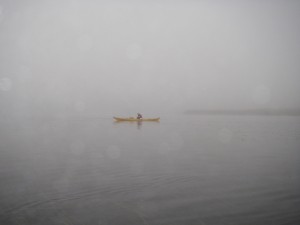Welcome to Kayak Review! Whether you’re a seasoned paddler with a specific kayak model in mind or a newcomer seeking guidance on choosing the perfect kayak, you’ve come to the right place. Our goal is to assist you in making an informed decision about your next kayak purchase.
If you’re already well-versed in the world of kayaking and know exactly what type of kayak you’re looking for, you can quickly find what you need by clicking on the appropriate link in the page list on the right. However, if you’re new to this exciting waterborne adventure or simply need some assistance in determining the best kayak for your needs, we’re here to help.
Choosing the right kayak can be a rewarding process, but it often involves several important considerations. What type of kayaking will you be doing? Are you interested in leisurely lake paddling, thrilling whitewater adventures, or perhaps some long-distance touring? What’s your skill level, and what features are essential for your comfort and safety?
In the following sections, we’ll provide you with valuable insights and answers to these questions, helping you navigate the world of kayaking with confidence. Whether you’re embarking on a new aquatic journey or looking to upgrade your current kayak, Kayak Review is your trusted source for all things kayak-related. Let’s dive in and explore the exciting world of kayaks together!
Where Do You Want to Paddle?
Kayaking offers endless possibilities, doesn’t it? I share your enthusiasm! However, the vast world of kayaking demands a bit of focus. If you intend to explore a wide range of water environments, from serene lakes to challenging whitewater rapids and even the expansive open ocean, it’s evident that a single kayak won’t suffice for all your adventures.

For those embarking on their kayaking journey and envisioning tranquil paddling sessions on local lakes and rivers, a recreational kayak might be the perfect choice. These kayaks are designed for leisurely outings and are excellent for beginners. If your goal is to combine fishing with kayaking, it’s wise to consider a kayak equipped with special features tailored for angling, such as built-in rod holders.
However, if you have aspirations of embarking on kayak camping expeditions, you’ll require the enhanced storage capacity that touring kayaks provide. These kayaks are ideal for extended trips where you need to carry camping gear and supplies. If your heart is set on venturing into the open ocean, then a dedicated sea kayak should be at the top of your list. Sea kayaks are designed to handle the challenges of ocean conditions, providing stability and control for your sea-bound adventures.
On the other hand, modern whitewater kayaks are engineered with specific whitewater types in mind, making them less practical for general use on calm lakes and rivers. These specialized kayaks excel in the turbulent waters they’re designed for, ensuring a thrilling experience for whitewater enthusiasts.
For those who experience claustrophobia or apprehension when enclosed in a sit-in kayak, there’s an alternative – the sit-on-top kayak. Sit-on-top kayaks offer a more open and comfortable seating arrangement. While they are suitable for recreational kayaking, fishing, and potentially short overnight touring trips, they are generally unsuitable for tackling the challenges of the open ocean or navigating through whitewater rapids.
Finally, inflatable kayaks have gained popularity, largely due to their portability. These kayaks can be deflated and stowed in the trunk of your car, making them convenient for spontaneous adventures. In terms of performance, inflatable kayaks typically fall into the category of recreational kayaks, suitable for calm waters and relaxed paddling.
The following sections will delve into greater detail about the various types of kayaks, helping you make an informed choice for your specific kayaking ambitions
Different Types Of Kayaks
Sea Kayaks
If you are in the market for a kayak suitable for embarking on ocean adventures, then consider the merits of a sea kayak. These versatile watercraft are not limited to oceanic use alone; in fact, they are a specialized subset within the realm of touring kayaks. Sea kayaks are distinguished by their substantial storage capacity, rendering them ideal companions for extended kayak camping expeditions. Their elongated design facilitates superior tracking, enabling them to maintain a straight course more effectively than their shorter counterparts. However, this elongation also translates to slower turning responsiveness compared to shorter kayaks. Sea kayaks typically feature a relatively narrow profile, resulting in reduced primary stability (initial stability) when compared to wider kayaks; they may initially feel less stable. Nonetheless, many sea kayaks exhibit excellent secondary stability, allowing skilled paddlers to confidently edge them for advanced maneuvering.
While the terms “sea kayak” and “touring kayak” are often used interchangeably, I propose distinguishing between the two. While any sea kayak can serve for touring purposes, not every touring kayak is suitable for oceanic use. The key distinction lies in the length of the kayak. In my view, a genuine sea kayak should measure at least 16 feet in length. Admittedly, this may seem like an arbitrary criterion, as many touring kayaks are only slightly shorter than 16 feet and share numerous features with their longer counterparts.
To some extent, this distinction may appear arbitrary. It is true that comparing a 15.5-foot touring kayak to the same make and model at 16 feet would not necessarily render the shorter version unsuitable for oceanic adventures. However, when confronting more challenging conditions at sea, such as larger swells along the open coast, I firmly believe that the additional length offered by a longer kayak becomes indispensable. Therefore, setting a cutoff point at 16 feet makes practical sense, considering the safety and performance benefits it provides.
For those seeking further guidance on selecting the right sea kayak, I encourage you to explore the resources available on the “Touring and Sea Kayaks” page
Touring Kayaks

Similar to my perspective on establishing a minimum length requirement for sea kayaks, I also advocate for the imposition of a minimum length criterion when defining touring kayaks.
Length, undoubtedly, plays a pivotal role in distinguishing touring kayaks from their shorter recreational counterparts. It assumes significance for several compelling reasons, as elaborated upon in the preceding section on sea kayaks. Longer kayaks excel in tracking a straight course, a crucial attribute when embarking on touring expeditions, where the objective is to efficiently navigate from point A to point B, conserving energy by avoiding frequent course corrections. In my view, I believe that kayaks measuring less than 12 feet in length generally do not fit within the touring kayak category, although there may exist occasional exceptions.
Additionally, longer kayaks provide more generous storage space for equipment. If a kayak cannot easily accommodate the gear required for multi-day camping excursions, typically involving one or two nights in the wilderness, I am inclined to exclude it from the realm of touring kayaks. Furthermore, I propose that touring kayaks should possess a minimum of two gear hatches, excluding the cockpit. General-purpose touring kayaks might exhibit slightly greater width compared to sea kayaks, thereby enhancing primary stability, albeit at the cost of reduced effectiveness in edging maneuvers.
Recreational Kayaks:
If your kayaking plans don’t involve venturing into ocean waters or embarking on kayak camping trips, then opting for a shorter and wider recreational kayak could be an excellent choice. The recreational kayak category encompasses a wide variety of kayak styles, but their defining feature is their exceptional stability. Among all kayak designs, recreational kayaks are renowned for being the most stable.
Their remarkable stability primarily stems from their width, although the hull shape also contributes to this attribute. Some recreational kayaks are so stable that you can comfortably stand up in them and sit back down without the risk of capsizing. However, this stability comes at the expense of speed. Due to their broader profiles compared to sea kayaks or touring kayaks, recreational kayaks displace a significant amount of water, resulting in notably slower speeds. Nevertheless, if you’re simply enjoying a leisurely day on a lake or a calm section of a river, you’re unlikely to be in a rush to cover distances quickly.
Sit-On-Top Kayaks:
Sit-on-top kayaks represent a subset of the recreational kayak category, and their name describes their design accurately. Instead of sitting inside the kayak, you perch on top of it. Sit-on-top kayaks may even surpass sit-in recreational kayaks in terms of stability. However, once again, this enhanced stability comes at the cost of speed and efficiency.
Sit-on-top kayaks typically feature holes that penetrate the plastic hull, making them effectively self-draining. However, these openings can also allow water to splash up into the kayak, making sit-on-top kayaks a wetter experience compared to more traditional sit-in kayaks. Consequently, if you intend to paddle your sit-on-top kayak in cold water conditions, it’s advisable to wear a wetsuit (or even a dry suit) to protect yourself from the cold water
Inflatable Kayaks and Folding Kayaks: A Convenient Solution for Transportation and Storage
Inflatable kayaks and folding kayaks offer an array of advantages, with their greatest appeal lying in their ease of transport and storage. If you find yourself lacking the space to accommodate a rigid kayak, these versatile alternatives provide an ideal solution. They can be deflated or folded down, neatly stowed away in a compact storage bag, and tucked into a closet or any confined space. While inflatable kayaks and folding kayaks are often associated with the recreational kayak category, it’s worth noting that there are models within these categories that cater to more performance-oriented kayaking experiences. As always, your intended usage should remain a central consideration when selecting the perfect inflatable or folding kayak for your needs.
Fishing Kayaks: Designed with Anglers in Mind
Fishing kayaks represent a specialized subset of recreational kayaks, meticulously crafted with fishing enthusiasts in mind. These kayaks come equipped with an array of fishing-specific features, such as dedicated rod holders, strategically placed hatches for bait and gear storage, and other amenities tailored to enhance your fishing experience. Fishing kayaks are available in both sit-on-top and traditional sit-in configurations, although the former tends to be more popular among anglers due to its advantages for fishing activities.
Whitewater Kayaks: Specialized Options for Thrilling Adventures
Whitewater kayaking has evolved into a highly specialized discipline, leading to the emergence of various subcategories, including creek boats, play boats, and more. While I have not yet provided detailed guidance on choosing a whitewater kayak, rest assured that I plan to incorporate comprehensive information about these diverse subcategories on Kayak Review in the near future. In the meantime, you can utilize the Kayak Search page to explore specific kayak models or types. Additionally, I welcome your input and suggestions on the Contact Us page regarding which whitewater kayak categories you’d like to see covered first. Your feedback is greatly appreciated!




